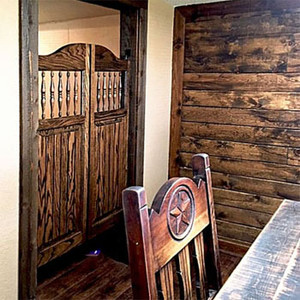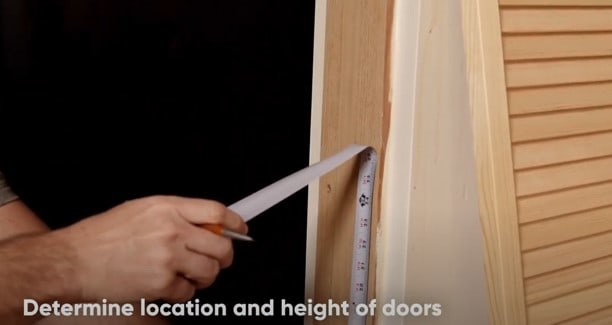
How to Position Saloon Doors in the Doorway
How to Position Saloon Doors in the Doorway
Saloon doors in our modern settings take us back to a time of the Old West. Here's how to position saloon doors in the doorway so you can hang them and enjoy.
Saloon doors, (or cafe doors as they have also come to be known), have been growing in popularity for the variety of style they bring to a decor.
They also serve as a functional way to create a partition between two rooms without having to worry about opening a door while carrying things like plates of food or drinks.
But it's not as simple as adding a special hinge, you also need to ensure you have precise measurements for the right position. Otherwise, your doors may be misaligned or worse, not even be able to have a full swing.
The steps below give you everything you need to know about positioning your saloon doors using pivot hinges. Saloon doors can also be operated with various spring hinge designs. For the purposes of this blog we are covering pivot hinges also referred to as gravity hinges.
1. Check the Pivot Hinge Position for Swing
Every pivot hinge has recommended installation requirements.
You don't want to put holes in your door to then find out that the hinge is in the wrong location. After checking the recommended distance, use a pencil and a metal ruler to mark the exact locations you want.
If you have someone to help you, you can even stop at this point to hold the door and the hinge against the jamb to quickly test if the distance leaves room for a safe and comfortable swing.
Being as close to 100% certain as you can before proceeding ensures the rest of the installation will go well.
2. Correctly Position the Pivot Hinges on the Saloon Doors
With the markings done and the test performed, you're ready to put the pivot hinges on the cafe doors.
Of course, before proceeding you should make sure that you have identified which of the pivot hinges are for the top and which are for the bottom. It's not uncommon for people to accidentally mix them up and have to take them off and reattach them in the correct place. We recommend pre-drilling all holes on the doors.
3. Choose Your Preferred Height

We recommend a distance of around 20 inches off the floor for a standard 38" door. For a 60" tall door we recommend 10" off the Floor.
However, everyone is different and what works for many may not work for you. Again, in this situation, you would ideally want to have someone to help you decide on the best height for your door
One thing you can do is cut the size and shape of the doors out of cardboard. Then, have someone hold them up while you look at it from then adjust as necessary.
This is a great way to ensure it's at a height which is perfect for you. Once you've found the perfect spot, mark it with a pencil on both sides of the door jamb. Make sure the spots are directly across from one another on the door jamb, it is very important that the doors are aligned properly to ensure a nice finished look.
Some people prefer to mount at the bottom of the door jamb for a pet gate or baby gate.
4. Work Your Way Up
At the locations you've marked with a pencil, install the bottom pivot hinges onto the door jambs.
Carefully place one of the doors into the bottom hinge and then insert the top pivot hinge into the mating pivot one you already installed on the door. From there, you can find the right position for the top pivot on the jamb.
5. Finalize the Position
Once you're sure it is straight you can screw the top pivot hinge into the jamb. After that, you simply repeat the process for the other door.
Be Slow and Methodical
Nothing is worse than going through all the effort of measuring and positioning your saloon doors just for it to be wrong.
That's why you should take your time, double check every measurement, and experiment with different positions before committing.
Check out our range of hardware designed for smooth swings that return to rest with grace and style.
